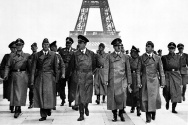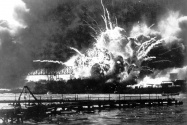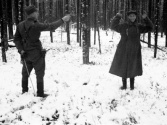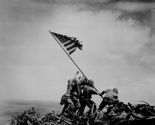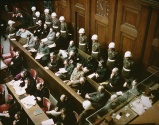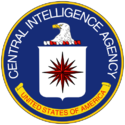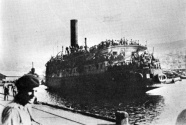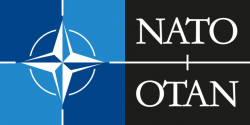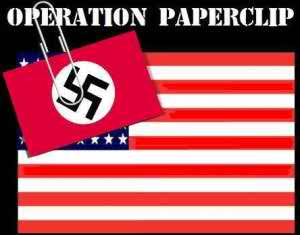1940s
| 1930s« |
|---|
Property "Has image" (as page type) with input value "File:" contains invalid characters or is incomplete and therefore can cause unexpected results during a query or annotation process.
World War II was the defining event of the 1940s, just as the Cold War was the defining event of the post-war period, the backdrop against which other events should be understood.
Contents
World War II
- Full article: World War II
- Full article: World War II
Post WWII
Operation Paperclip
- Full article: Operation Paperclip
- Full article: Operation Paperclip
Even before WWII had finished, the US Joint Intelligence Objectives Agency had begun Operation Paperclip, a secret project to exfiltrate personnel of interest out of Germany and into the United States. As well as spooks, these included researchers, especially rocket scientists, but anyone who was of use to the US war machine. The surreptitious protection and transportation of sometimes infamous senior Nazis went on for many years.
Nuremberg Trials
- Full article: Nuremberg Trials
- Full article: Nuremberg Trials
Rather than summary execution of perceived leaders of Nazi Germany, in November 1945, the allies convened the Nuremberg Trials to apply a legal process. Operation Paperclip exfiltrated some of those initially cited for trial at Nuremberg, such as Dr. Theodor Benzinger.
Cold War
- Full article: Cold War
- Full article: Cold War
Nuclear arms race
- Full article:
 Nuclear arms race
Nuclear arms race
- Full article:
After the bombings of Hiroshima and Nagasaki, the dramatic destructive power of nuclear weapons was clear to the world (if not the longer term destructive effects of radiation). The USSR quickly determined to acquire their own nuclear capability.
Related Quotations
| Page | Quote | Author | Date |
|---|---|---|---|
| Parastate | “The immediate concern of the United States was Europe, where it appeared that the French and Italian communist parties might be elected to power in 1948. From the beginning of the postwar era, Washington looked for assets and proxy armies of its own to combat the threat perceived from the Soviet Union and China. Some of these proxies like the the nationalist Chinese Kuomintang (KMT) troops in Burma or the Mafia's in Italy and Marseilles soon outgrew their US support to become de facto regional players or parastates, exhibiting some but not all of the properties of states in their own right. From 1945-1947, elements in the US army conspired to maintain contacts with former German anti-communists in Europe and their German army commander, General Reinhard Gehlen. 5 men were involved of whom 3 (William J. Donovan, Allen Dulles and Frank Wisner) were representatives of the Wall St. overworld and also of the New York Social Register which listed the members of New York high society. They were awaiting a new agency to succeed Donovan's Office of Strategic Services (OSS) and take over the Nazi's ethnic armies in Eastern Europe. But the idea of a centralised intelligence agency encountered fierce competitive opposition from the FBI's J. Edgar Hoover who was backed at first by elements of Army intelligence. Although it took 2 years to overcome their opponents, the Wall Street lawyers and bankers in Truman's administration succeeded in 1947 in establishing CIA, which would report to the president through the new National Security Council (NSC). This new agency, based on the precedent and personnel of the OSS had been urged on Washington by the War/Peace studies of the Council of Foreign Relations in the early 1940s. It was reinforced by a report commissioned in 1945 by Navy Secretary James V. Forrestal. The report was written by Ferdinand Eberstadt who like Forrestal was a private Wall Street banker from the investment bank, Dylan Reed. As CIA director Richard Helms narrates in his memoirs Allen Dulles, then a Republican lawyer in Sullivan and Cromwell in New York was recruited in 1946 to draft proposals for the shape and direction what was to become the new CIA. in 1947 Dulles promptly formed an advisory group of 6 men, all but one of whom were Wall St investment bankers or lawyers.” | Peter Dale Scott | |
| US/Deep state | “During the 1940s and 1950s, corrupt politicians championed the politics of anti-communism in order to divert attention from the growing nexus between organized crime, big business and government. At the center of this nexus stood FBI Director J. Edgar Hoover (1924-1972), who cultivated mob connected businessmen in his war against communism, while refusing to cooperate with the Kefauver Committee's landmark investigation of organized crime in 1950-1951.” | Jeremy Kuzmarov | 10 June 2021 |
